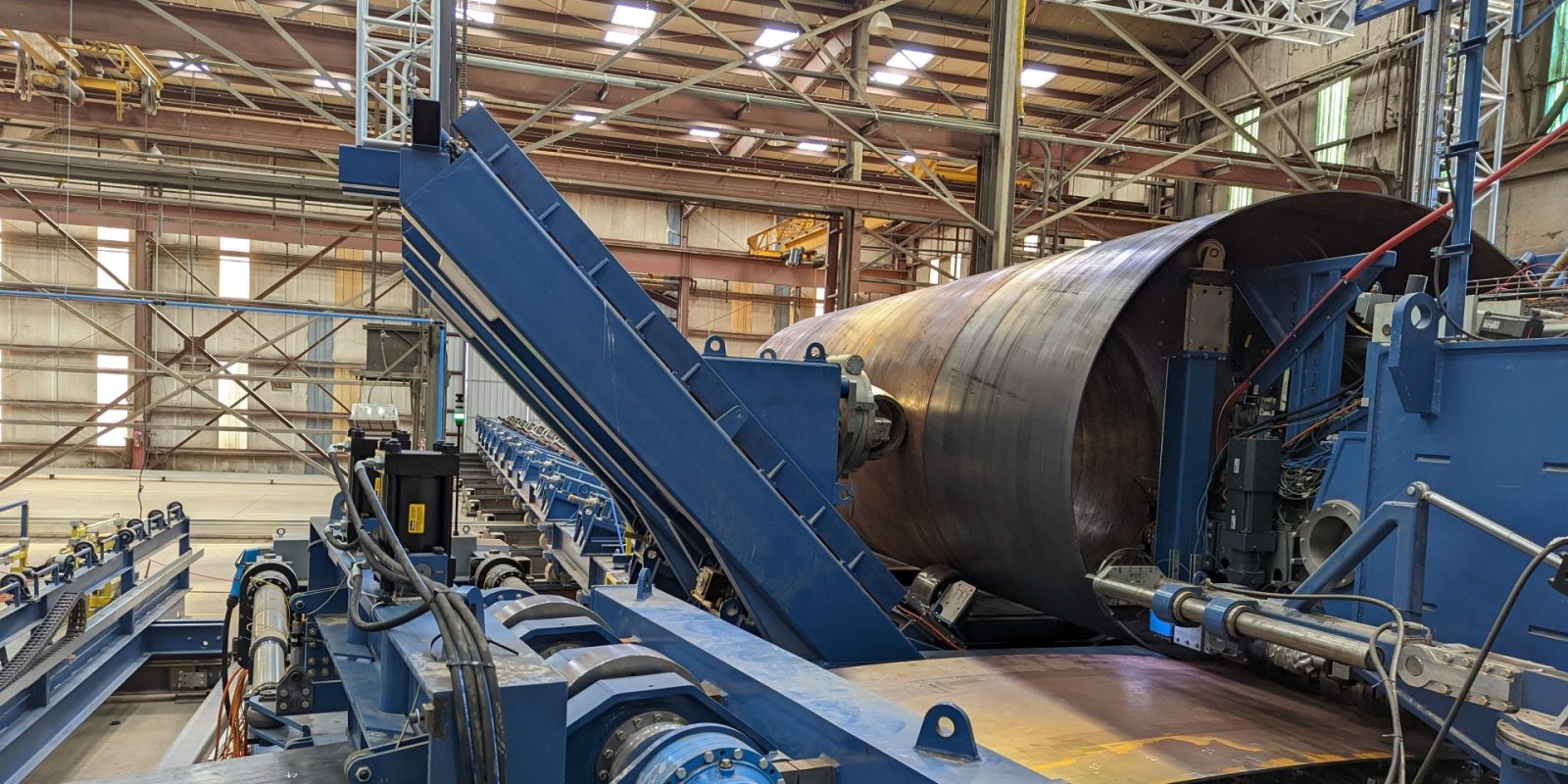
The first commercial spiral-welded wind turbine tower has begun operation – here’s what it is and why it matters.
The spiral-welded wind turbine tower was built by GE Renewable Energy and wind turbine producer Keystone Tower Systems. And after years of collaborating with the US Department of Energy, they installed the 89-meter-tall (292-foot-tall) tower on the GE 2.8-127 wind turbine.
The US Department of Energy explains what spiral welding is:
Spiral welding is when the steel used to make the tower is curled into a cylinder; essentially, these towers are built from meters-wide steel plates.
The technique requires only one machine to construct a tower section, and it can produce towers up to twice as tall and 10 times faster than conventional towers.
Keystone designs and builds its own custom spiral welding wind turbine tower manufacturing equipment in Denver. The manufacturing process uses coil steel – flat-rolled steel that’s been coiled up into a roll or coil shape – and Keystone’s machine allows tapered towers with variable wall thickness to be manufactured from constant width sheets of steel.
The manufacturing equipment completes the joining, rolling, fit-up, welding, and severing of a tower section – and that results in the continuous production of steel tower shells:
And here’s why spiral-welded wind turbine towers are going to be impactful: Keystone says it can make the lightest, lowest-cost, and most structurally optimized towers in the wind turbine industry.
GE and Keystone made their inaugural tower at Keystone’s factory in Pampa, Texas, in the state’s Panhandle. The brownfield factory was built at an idled factory that used to make oil and gas drilling equipment. The new wind turbine factory will return nearly 200 manufacturing jobs to the region.
Top comment by Arturo de Mojave
"Keystone’s machine allows tapered towers with variable wall thickness to be manufactured from constant width sheets of steel."
I think you mean variable diameter of the tower (to me, that is what 'tapered' implies). It seems like it would be difficult to change the plate thickness on the fly, as this is meant to be a continuous production process-- but maybe?
Keystone is also developing mobile factories capable of building taller towers directly at wind sites.
Production is now being ramped up of spiral-welded towers, with additional deliveries targeted for the first quarter of 2023. They’ll make more towers for the GE 2.8-127 turbine, and they can be used interchangeably with GE’s conventional 89-meter-tall tower. The spiral tower has received a component certification from TÜV NORD for a 40-year lifetime.
Eric Smith, Keystone’s cofounder and CTO, said:
I’m very proud of the years of hard work our team has invested in developing and scaling up tapered spiral welding.
UnderstandSolar is a free service that links you to top-rated solar installers in your region for personalized solar estimates. Tesla now offers price matching, so it’s important to shop for the best quotes. Click here to learn more and get your quotes. — *ad.
FTC: We use income earning auto affiliate links. More.





Comments